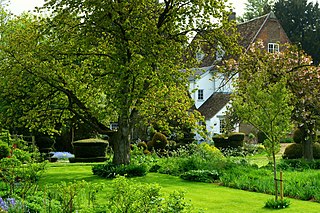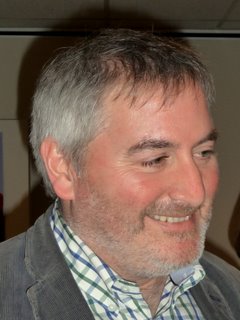
The Snowman is a 1982 British animated television film and symphonic poem based on Raymond Briggs's 1978 picture book The Snowman. It was directed by Dianne Jackson for Channel 4. It was first shown on 26 December 1982, and was an immediate success. It was nominated for Best Animated Short Film at the 55th Academy Awards and won a BAFTA TV Award.

Raymond Redvers Briggs was an English illustrator, cartoonist, graphic novelist and author. Achieving critical and popular success among adults and children, he is best known in Britain for his 1978 story The Snowman, a book without words whose cartoon adaptation is televised and whose musical adaptation is staged every Christmas.
The Carnegie Medal for Illustration is a British award that annually recognises "distinguished illustration in a book for children". It is conferred upon the illustrator by the Chartered Institute of Library and Information Professionals (CILIP) which inherited it from the Library Association.

Green Knowe is a series of six children's novels written by Lucy M. Boston, illustrated by her son Peter Boston, and published from 1954 to 1976. It features a very old house, Green Knowe, based on Boston's home at the time, The Manor in Hemingford Grey, Huntingdonshire, England. In the novels she brings to life the people she imagines might have lived there.
Melvin Burgess is a British writer of children's fiction. He became famous in 1996 with the publication of Junk, about heroin-addicted teenagers on the streets of Bristol. In Britain, Junk became one of the best-known young adult books of the decade. Burgess won the annual Carnegie Medal from the Library Association, recognising the year's best children's book by a British author. For the 10th anniversary in 2007 it was named one of the top ten Medal-winning works, selected by a panel to compose the ballot for a public election of the all-time favourite.

War Game is a children's novel about World War I written and illustrated by Michael Foreman and published by Pavilion in 1993. It features four young English soldiers and includes football with German soldiers during the Christmas truce, "temporary relief from the brutal and seemingly endless struggle in the trenches".
Robert Atkinson Westall was an English author and teacher known for fiction aimed at children and young people. Some of the latter cover complex, dark, and adult themes. He has been called "the dean of British war novelists". His first book, The Machine Gunners, won the 1975 Carnegie Medal for the year's outstanding children's book by a British subject. It was named among the top ten Medal-winners at the 70th anniversary celebration in 2007. Westall also won a second Carnegie, a Smarties Prize, and the once-in-a-lifetime Guardian Prize.

Chris Riddell is a South African-born English illustrator and occasional writer of children's books and a political cartoonist for the Observer. He has won three Kate Greenaway Medals – the British librarians' annual award for the best-illustrated children's book, and two of his works were commended runners-up, a distinction dropped after 2002.
Graham Oakley was an English writer and illustrator best known for children's books.

Anthony Lee Ross is a British author and illustrator of children's picture books. In Britain, he is best known for writing and illustrating his Little Princess books and for illustrating the Horrid Henry series by Francesca Simon, both of which have become TV series for Milkshake! and CITV respectively based on his artwork. He also illustrates the works of David Walliams. He has also illustrated the Amber Brown series by Paula Danziger, the Dr. Xargle series by Jeanne Willis, and the Harry The Poisonous Centipede series by Lynne Reid Banks.
Errol John Le Cain was a British animator and children's book illustrator. In 1984 he won the prestigious Kate Greenaway Medal for "distinguished illustration in a book for children" for Hiawatha's Childhood.
Mitsumasa Anno was a Japanese illustrator and writer of children's books, known best for picture books with few or no words. He received the international Hans Christian Andersen Medal in 1984 for his "lasting contribution to children's literature."

Patricia Evelyn Hutchins was an English illustrator, writer of children's books, and broadcaster. She won the 1974 Kate Greenaway Medal from the Library Association for her book The Wind Blew. On screen, she was best known as 'Loopy-Lobes' the second owner of the "Ragdoll boat" in the long-running children's series Rosie and Jim.

Father Christmas is a British children's picture book written and drawn by Raymond Briggs and published by Hamish Hamilton in 1973. Briggs won the annual Kate Greenaway Medal from the Library Association, recognising the year's best children's book illustration by a British subject. For the 50th anniversary of the Medal (1955–2005), a panel named it one of the top ten winning works, which composed the ballot for a public election of the nation's favourite.

Pirate Diary: The Journal of Jake Carpenter is an account of the pirate life cast as the journal of a young cabin boy, written by Richard Platt and illustrated by Chris Riddell. It was published by Walker Books in 2001, two years after Castle Diary, also by Platt and Riddell. Platt continued the "Diary" series with illustrator David Parkins.
Helen Gillian Oxenbury is an English illustrator and writer of children's picture books. She lives in North London. She has twice won the annual Kate Greenaway Medal, the British librarians' award for illustration and been runner-up four times. For the 50th anniversary of that Medal (1955–2005) her 1999 illustrated edition of Alice's Adventures in Wonderland was named one of the top ten winning works.

The Jolly Postman or Other People's Letters is an interactive children's picture book by Janet and Allan Ahlberg. The innovative project required five years to complete, and much discussion with both the publisher Heinemann and the printer before it was issued in 1986. The first subject heading assigned by WorldCat is "Toy and movable books". Little, Brown published a U.S. edition in the same year.
Brian Lawrence Wildsmith was a British painter and children's book illustrator. He won the 1962 Kate Greenaway Medal for British children's book illustration, for the wordless alphabet book ABC. In all his books, the illustrations are always as important as the text.

Dr. Xargle is a series of children's picture books written by Jeanne Willis and illustrated by Tony Ross; the original six books were published by Andersen Press from 1988 to 1993. It features an alien perspective on human civilization, especially the life of British children and their families. Alternatively, Dr. Xargle is the main character, an alien who studies Earth and teaches schoolchildren about it. Sometimes he takes them on field trips to Earth in human disguises. Finally, Dr. Xargle is a 1997 British television series based on the original books.

The Saga of Erik the Viking is a children's novel written by the Welsh comedian Terry Jones, illustrated by Michael Foreman, and published by Pavilion in 1983. Foreman was commended for the annual Greenaway Medal by the Library Association, recognising the year's best-illustrated children's book by a British subject.












